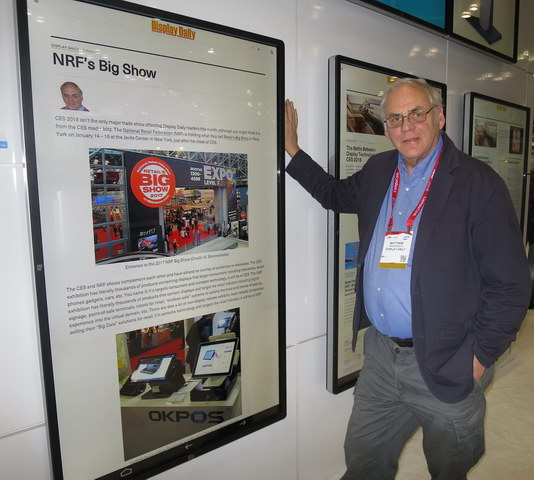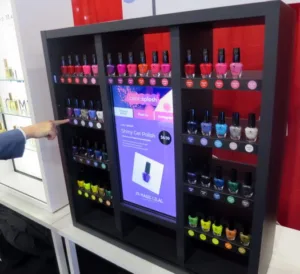There are a lot of red-hot new display technologies out there grabbing the press and consumer interest. 4K, 8K, high dynamic range, wide color gamut, high frame rate, retinal displays, light field displays, VR, AR, foveated displays, flexible and curved displays, OLED, laser projectors, MicroLEDs, transparent displays, mirrored displays, you name it. You will be able to read all about these technologies in Meko’s Special Report on CES 2018, due out soon. (Subscription required)

Sometimes the display community seems like everyone is looking for the hot tip of the week. Who’s on top this week, OLED or LCD? What will the Next Big Thing be? One question the display manufacturers always ask is “Will I be able to get a premium price for it?”
Many people in the display community forget that most displays are used for mundane applications where these new display technologies are simply not needed. Some people want the latest and greatest and watch TV on a 4K HDR display. OK, but the source is often a standard-definition (SD) DVD or streaming video at still lower resolution. They use their computer monitors to look at Facebook posts. They use retinal displays to look at selfies taken with smartphone cameras that can cost as little as $1.00. Gamers will deliberately set their game systems to a reduced resolution so they get better response time from their graphics processors.
 Matt Brennesholtz at the NRF’s Big Show with a 70” digital signage display from Elo with 1080p (1920 x 1080) resolution and 20 point touch capabilities. (Credit: M. Brennesholtz)
Matt Brennesholtz at the NRF’s Big Show with a 70” digital signage display from Elo with 1080p (1920 x 1080) resolution and 20 point touch capabilities. (Credit: M. Brennesholtz)
I visited the National Retail Federation (NRF) Big Show last week and one thing in particular struck me. Except for a few 4K digital signage displays, none of the displays at the NRF used any of these new, cutting edge display technologies. Most of the displays at the NRF are designed to do mundane tasks and mundane displays are perfectly serviceable.
Of the (relatively) new display technologies, there is one thing the retailers want and the technology companies provide: touch displays. Virtually all displays at the NRF that I saw were touch-enabled and there were some touch systems shown that weren’t even displays. In several cases, the corporate representatives at the NRF couldn’t tell me about the resolution of a display being demonstrated but he could always tell me about its touch capabilities.
Touch display case from Perch Interactive at NRF. The IR touch sensor surrounded not just the display but the cosmetic bottles as well, allowing customers to touch a bottle and see details on the display. By touching the display, how to apply instructions and Instagram photos could be found for the selected item. (Credit: M. Brennesholtz)
This race to build displays with improved performance and advanced capabilities is nothing new in the display community. My first job in the display industry was at a GTE Sylvania CRT factory where I worked on the design and manufacturing technology for color CRTs. My boss told me an anecdote about the race to build the brightest possible color CRT, since early color CRTs were so dim they practically had to be watched in the dark. He said he knew that race was over when he came home one day and found his grandfather watching TV with sunglasses on. That was it – brighter CRTs weren’t needed. While I was at GTE Sylvania (Later acquired by Philips), the drive was not to increase brightness but to trade off this high brightness capability for increased contrast in the presence of ambient light.
This need for contrast in ambient light was a major problem for plasma displays and may be a problem for OLEDs. OLEDs in total darkness have wonderful contrast but who uses his TV, smartphone, computer monitor, point-of-sale terminal or digital signage display in total darkness? When most consumers are watching SD content, is an 8K TV really needed? Is the resolution race over?
Subscribers can see a complete report on displays at the NRF Big Show in the January 26th issue of Large Display Monitor or Mobile Display Monitor. –Matthew Brennesholtz

